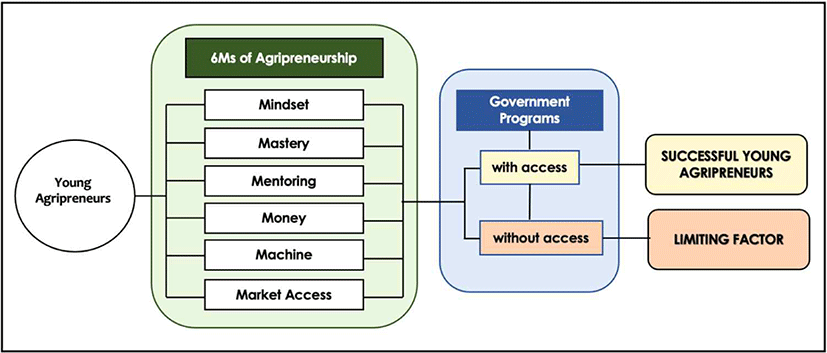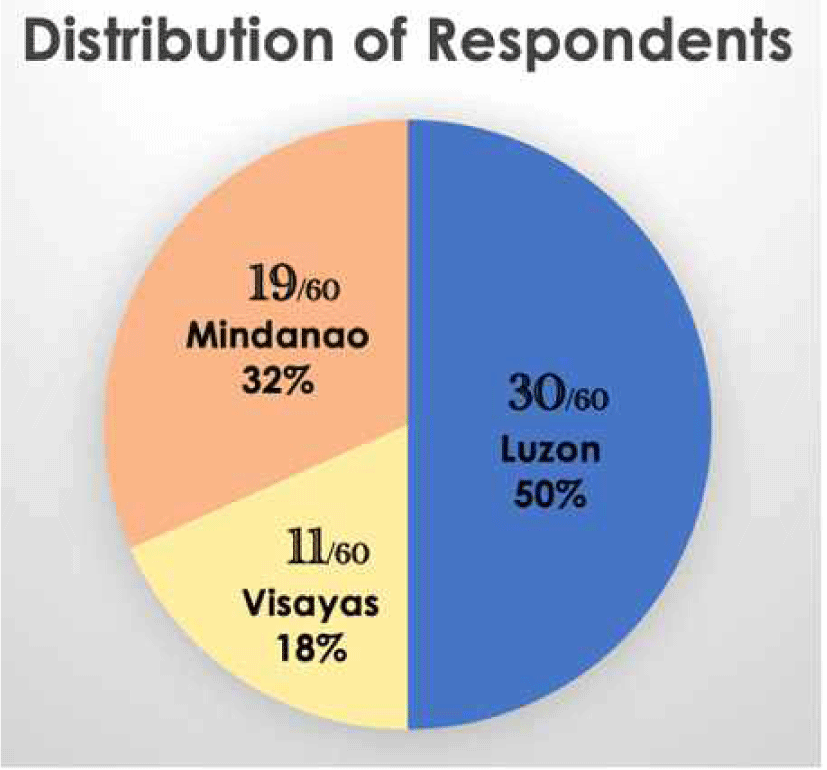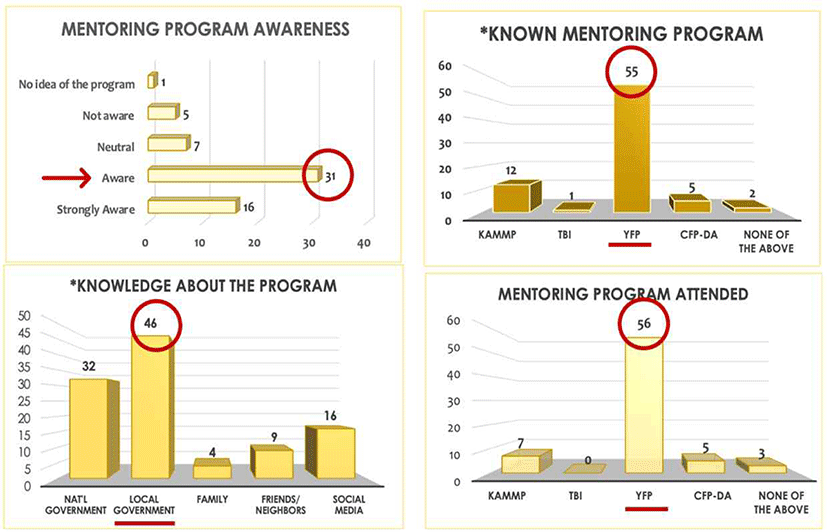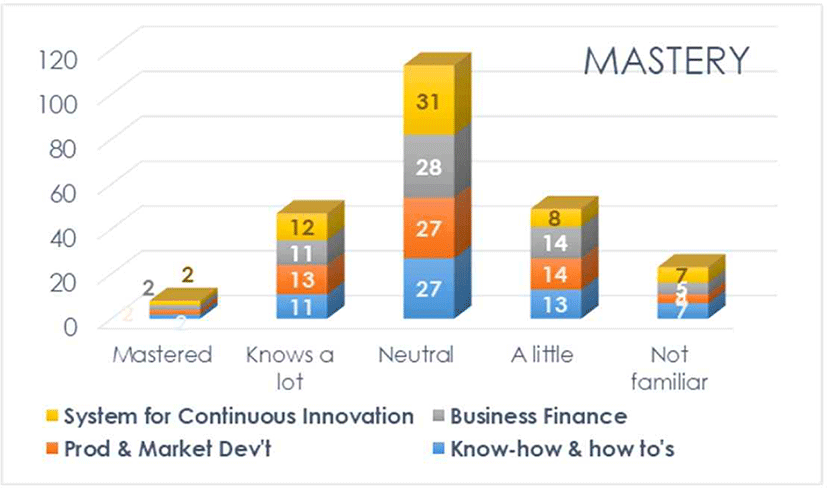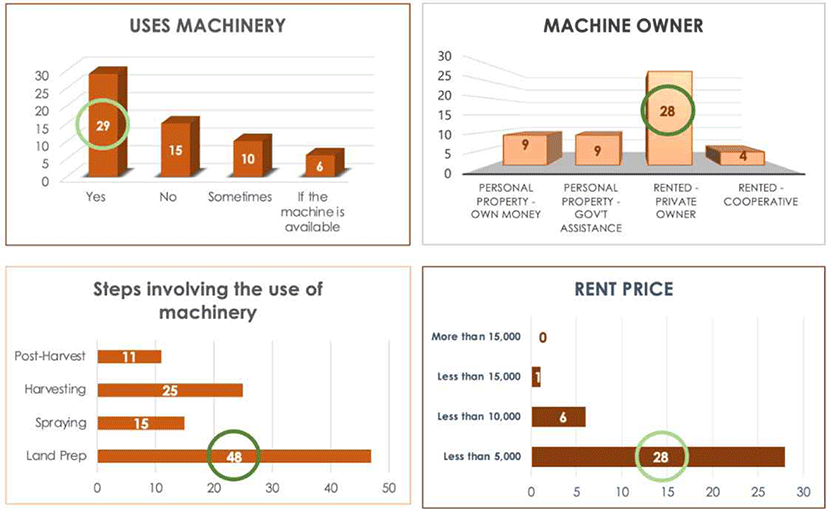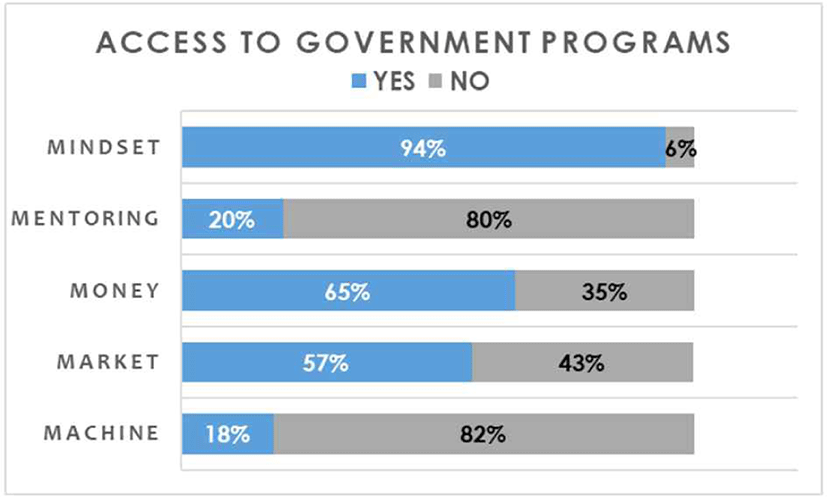I. INTRODUCTION
“The future challenges facing agriculture will require a paradigm shift from a production orientation to a market-centric orientation. There should be a mindset shifts from a traditional perspective of agriculture production to a market-centric agribusiness model. Philippine agribusiness and food marketing systems are changing steadily in a positive way. Agriculture is a dynamic sector, offering many opportunities for entrepreneurship along the entire agribusiness value chain. Furthermore, innovation in technological applications, agri-products, and business models have been attracting Filipino youth to agriculture. Harnessing and enabling the entrepreneurial spirit and skills of young people to become successful Agri entrepreneurs will require a mindset shift, tailored support, access to adequate and affordable financing, and the appropriate enabling environment” (Baticados, 2018).
Agri-entrepreneurship or agripreneurship provides value addition to agricultural resources typically engaging rural human resources. The finished goods and services coming out of Agrientrepreneurial initiatives are generally procured and produced out of resources in rural areas, the consumption of which however may be both urban and rural (Mukhopadhyay & Mukhopadhyay, 2020).
Rural youth are the future of food security, but few young people around the world see a future in agriculture especially in rural areas. They face numerous challenges in their attempts to earn a living; they lack access to credit and many other productive resources necessary for agriculture.
According to the “Youth and agriculture: Key challenges and concrete solutions” - a 2014 publication by the FAO1)) in collaboration with CTA2)) and IFAD3)), “a joint MIJARC4))/FAO/IFAD project on Facilitating Access of Rural Youth to Agricultural Activities was carried out in 2011 to assess the challenges and opportunities with respect to increasing rural youth’s participation in the sector. Over the course of the project, six principal challenges were identified” (FAO, 2014).
“The first principal challenge identified is youth’s insufficient access to knowledge, information and education. Poor and inadequate education limits productivity and the acquisition of skills, while insufficient access to knowledge and information can hinder the development of entrepreneurial ventures. The second challenge identified during the project is youth’s limited access to land. Although access to land is fundamental to starting a farm, it can often be difficult for young people to attain.
Inadequate access to financial services was identified as the third principal challenge. Most financial service providers are reluctant to provide their services - including credit, savings and insurance - to rural youth due to their lack of collateral and financial literacy, among other reasons. Promoting financial products catered to youth, mentoring programs and start-up funding opportunities can all help remedy this issue.
This includes challenges in securing green jobs, which was highlighted as the fourth challenge to increasing youth involvement in agriculture. Green jobs, which are more labor-intensive and eventually involve more value-added, can create more sustainable livelihoods in the long run. However, rural youth may lack the essential skills (or access to skill-upgrading opportunities) to participate in the green economy. To address this skills mismatch, youth access to education and training – both formal and informal on-the-job training – must be improved.” The fifth major challenge highlighted was young people’s limited access to markets, as youth will not be able to engage in profitable and sustainable agricultural ventures without such access. Access to markets for youth is becoming increasingly difficult as a result of supermarkets’ expanding international reach and the rigorous criteria of their supply chains. The sixth challenge identified was youth’s limited involvement in policy dialogue. Too often young people’s voices are not heard during the policy process, and so their complex and multifaceted needs are not met.
While these challenges are complex and interwoven, a number of key conclusions can be drawn from the case studies: ensuring that youth have access to the right information is crucial; integrated training approaches are required so that youth may respond to the needs of a more modern agricultural sector; modern information and communications technologies offer great potential; there is a distinct need to organize and bring youth together to improve their capacities for collective action; youth- specific projects and programs can be effective in providing youth with the extra push needed to enter the agricultural sector; and a coherent and integrated response is needed from policymakers and development practitioners alike to ensure that the core challenges faced by youth are effectively addressed (FAO, 2014).
Young Farmers have the greatest potential for boosting the agricultural and fisheries sectors in the Philippines. And, in order to help them become successful agripreneurs, it is vital to understand the barriers they are currently facing. This served as the foundation for this study, which enabled us to identify the limiting factors affecting the value-adding capacity of young agripreneurs in the Philippines by employing the 6M’s of Agripreneurship, which was based on the 7M’s of Successful Entrepreneurs – Way of Uplifting Micro, Small, and Medium Enterprises (MSMEs) developed by the Philippines’ Department of Trade and Industry (DTI).
A descriptive method of research with a survey technique was used in the conduct of the study. This method was chosen because it “may be characterized as simply the attempt to determine, describe or identify what is” (Ethridge, 2004), it is aimed at casting light on current issues or problems through a process of data collection that enables them to describe the situation more completely.
The 6Ms of agripreneurship served as a reference for the questionnaires, which were derived from the 7Ms of Successful Entrepreneurs Way of Uplifting MSMEs developed by the Philippines’ DTI. The DTI’s 7Ms include “Models of Negosyo” (Models of Business) as the seventh M, in which they provide clients with a variety of business concepts to help them get started, ranging from traditional enterprises to direct selling and franchising. At the DTI’s Negosyo Centers, there are numerous ways to conduct business. MSMEs must work with larger firms to create synergies, which are essential in matching and developing products and services. These Negosyo Models are a DTI project, therefore they were not included in this study (<Figure 1>).
The collection of primary data was accomplished through a survey questionnaire that was completed by the identified respondents who are graduates of Young Filipino Farmers Training Program in Japan (YFFTPJ) Batch 2014-2018. A sample size of sixty (60) respondents was identified from the population size of ninety-four (94) to gather an acceptable sample size with a confidence level of 95% and confidence interval (margin of error) of +/– 7.61. The YFFTPJ graduates were chosen as the target population because they represent Young Farmer Leaders and Agripreneurs who have received government training and are thus credible resources. A total of sixty (60) completed questionnaires were submitted through the google survey form.
II. LITERATURE REVIEW
The first pillar of the Department of Agriculture’s New Thinking in Agriculture is the modernization of the agriculture and fisheries sectors, which includes the use of modern technology to boost farmer efficiency and yield, as well as the empowering of farmers as agricultural entrepreneurs (agripreneurs). “Agripreneurship should also be included in the paradigm for modernizing Philippine agriculture, since farming and fisheries should be considered as business ventures or industries,” argues DA Secretary William Dar. The Department’s slogan, “Masaganang Ani, Mataas na Kita,” emphasizes the importance of empowering small farmers to not only enhance agricultural output and yield, but also to boost their income. To do so, they must transform from simply producers of raw materials to proprietors of agribusinesses, or agripreneurs, with value added to their products and marketing to maximize earnings.
It is a cycle that the Department is attempting to break, with its programs and related strategic communications aimed at inspiring and uplifting farmers, urging them to make use of the technical assistance, subsidies, and financial assistance available to them. Existing farmers must first recognize that they may earn more by exploring and expanding into more profitable and sustainable farming and agribusiness in order to achieve the sector’s targeted growth (Department of Agriculture - Agricultural Credit Policy Council, 2022).
Youth unemployment represents a significant socio-economic challenge in Africa, which has the youngest population of any of the world’s continents. Encouraging entrepreneurship and agripreneurship, in particular, is a critical part of the solution to creating jobs for the burgeoning youth population. Young agripreneurs can make significant positive contributions to economic, social and environmental impacts. However, innovative policies and programs are needed to incentivize youth to become agripreneurs, and to provide the necessary support to overcome age specific barriers.
Young entrepreneurs may have to overcome greater barriers to succeed than their more experienced counterparts. Aspiring young entrepreneurs need improved skills and education, access to finance and capital, mentorship and links to professional networks. Furthermore, an improved business enabling environment is indispensable to all agripreneurs, but particularly to young agripreneurs, as issues of corruption, crime and underdeveloped infrastructure may be especially challenging for youth, who often lack the connections and knowledge to overcome such hurdles.
Generally, though, young entrepreneurs have to overcome greater barriers to succeed than their more experienced counterparts. The four most common challenges that young entrepreneurs in sub-Saharan Africa face are:
(1) lack of capital and poor access to finance; (2) lack of appropriate skills and education; (3) weak administrative or regulatory frameworks and property rights; and (4) lack of mentors, adequate support structures, and links to professional networks (FAO and EcoVentures International, 2019).
A joint MIJARC5))/FAO6))/IFAD7)) project on Facilitating Access of Rural Youth to Agricultural Activities was carried out in 2011 to assess the challenges and opportunities with respect to increasing rural youth’s participation in the sector. Over the course of the project, six principal challenges were identified.
The first principal challenge identified is youth’s insufficient access to knowledge, information and education. The second challenge identified during the project is youth’s limited access to land. Inadequate access to financial services was identified as the third principal challenge. Difficulties accessing green jobs was identified as the fourth challenge to strengthening youth’s involvement in agriculture. The fifth principal challenge identified was young people’s limited access to markets as without such access youth will not be able to engage in viable and sustainable agricultural ventures. The sixth challenge identified was youth’s limited involvement in policy dialogue. Addressing these six principal challenges will prove vital to increasing youth’s involvement in the agricultural sector, and ultimately addressing the significant untapped potential of this sizeable and growing demographic. In developing countries in particular, facilitating the youth cohort’s participation in agriculture has the potential to drive widespread rural poverty reduction among youths and adults alike (FAO, 2014).
Most of the business establishments in the country are MSMEs which signifies that the largest bulk of the workforce belongs to this sector. With the renewed thrust of recognizing MSMEs as a substantial contributor to the country’s economic growth and employment, improved and innovative initiatives from the government have been crafted including the convergence of available development resources and coordination among stakeholders to ensure MSMEs’ sustainable growth and accelerate the achievement of the country’s economic goals. Among the initiatives of the government is the DTI’s 7Ms which aims to help Filipinos to set up their own business and be smarter entrepreneurs. With the planned projects in attaining the seven-point strategy that includes Mindset, Mastery, Mentoring, Markets, Money, Machines, and Models of Business, the Department of Trade and Industries hopes that these ways can make a difference in the market which will consequently contribute to the larger cause of sustaining the Filipino entrepreneurship revolution (Department of Trade and Industry, 2018).
The DTI is organizing the ASEAN 2017 MSME Development Summit: The 7Ms Towards Shared Prosperity in ASEAN happening on July 14, 2017 at the Philippine International Convention Center (PICC) in Manila in order to place the MSMEs at the forefront of the regional agenda. The Summit aims to inspire and inform participants, particularly small entrepreneurs, on wider opportunities in the AEC (ASEAN Economic Community) and on government initiatives in support of MSME development.
The ASEAN 2017 MSME Development Summit will serve as a platform in bringing together the MSMEs, private sector, government, and other stakeholders from the ASEAN Member States and consolidate their full engagement and support of initiatives toward asserting MSMEs as driver for inclusive growth within the context of closer regional economic integration fostered by the ASEAN Economic Community.
In advancing the development and strengthening of MSMEs and mainstreaming the MSMEs in the AEC agenda, the Philippine government, through the DTI, pursues a seven-point strategy summed up in 7Ms. Namely, these are Mindset, Mastery, Mentoring, Markets, Money, Machines, and Models.
With the theme, “The 7Ms Towards Shared Prosperity in ASEAN,” the Summit aims to gather insights from thought leaders and experts addressing the 7Ms that sum up the elements of the approach and framework for enabling and fostering the country’s small enterprises.
The Summit will place the interests of MSMEs at the center of the AEC agenda and putting together the MSME advocates, mentors, enablers and business experts from the ASEAN region who can help develop, handhold, and empower the MSMEs and spread the economic fruits of the AEC dream (ASEAN Business Advisory Council, 2017).
III. ANALYSIS AND DISCUSSION OF SURVEY FINDINGS
The YFFTPJ only allowed male participants until 2018, and the respondents range from batches 2014 to 2018, so all 60 respondents are male. The modal age group, which accounts for 61.7%, is 26–30 years old. The vast majority of respondents (48.3%) completed Technical Vocation courses, while 28.3% enrolled in or completed a university degree. The distribution of respondents across the three (3) main islands of the Philippines are shown in <Figure 2>. This demonstrates the extensive coverage and representation of young agripreneurs in the Philippines. Luzon has 50% of the respondents because it has 8 regions, Mindanao has 6, and Visayas has only 3 regions, which explains why Visayas has the lowest number of respondents in this study. There are two available slots in each region for the YFFTPJ Program, ensuring an even distribution of participants.
Majority of the respondents (41%) are farm/ business owners and has the yearly income of Php250,000 below (91.7%). Most of them (66%) plant two to three times a year, with the majority of them farming on family-owned land (38.3%) or renting (25%). The Philippines had 4.61 million farms, with an average national farm size of 2.16 hectares, according to the Food and Agriculture Organization. As per the respondents, the total land area used for farming is 1–5 hectares (53.3%), 1 hectare or less (41.7%), and 5.1–10 hectares (5.1–10 hectares) (5%).
Most respondents’ farms for commercial purposes (33.3%) while 30% for subsistence and others farm for housework, hobby and health reasons. Almost all the respondents expressed a desire to continue farming with 86.7% choosing Strongly Agree, six (6) choosing Agree, and one (1) responding Neutral. This is a good sign for Philippine agriculture; however, as various studies have shown, engaging the younger generation in agriculture is difficult because Filipino agricultural workers remain among the poorest and most disadvantaged groups in Philippine society. “The young people chose to leave rural areas to pursue more lucrative jobs in commercial centers. To resolve this problem, the DA created different programs so that the Filipino youth can start their agribusiness (Dar, 2021). Positive responses from the young agripreneurs who took part in this study provide hope for the future of Philippine agriculture.
The primary goal of the various government initiatives is to encourage and motivate young Filipinos to return to farming by ensuring that the government assists these young agripreneurs at each stage of the process. This appears to be conveyed positively, with 83.4% reporting that these government programs influenced their decision to engage in farming. The remainder are self-motivated individuals who chose to work in agriculture on their own. The most important Government Programs identified by the respondents are Training and Educational Programs with 61.7% and Financial Programs with 26.7%. This serves as a good sign that future farmers are aware that to sustain the agribusiness, they must first understand and learn how to manage the agribusiness.
A child’s developing attitudes, beliefs, opportunities, habits, and personality traits are heavily influenced by his or her family and friends. They have a large influence on who a child becomes and what he or she achieves. In terms of family members involved in farming, 92% have members of their family involved in farming, and 98% have members of their friends involved in farming. Seventy-six percent (76%) have received assistance from their Local Government Units that are determined to help transform Philippine agriculture into a dynamic and high-growth sector. All the respondents are members of a club, group, organization, or cooperative, and 95.4% of them believe that belonging to one of the groups is beneficial to them.
To ensure inclusive growth and address economic inequality, those at the bottom of the pyramid and marginalized sectors must be equipped with the necessary mindset and skills to advance in life. With the farmers in the Philippines averaging the age of 57 years old. The youth are particularly open to adopting new technologies that can double the agricultural production and create more products through value addition. Furthermore, the combined efforts of the young agripreneurs can have a social impact by addressing hunger and poverty.
Youth can be a significant push for modernizing and industrializing the country’s agriculture industry, particularly if an ecosystem for agripreneurship is created. A modernized and industrialized agriculture sector should be viewed as a business, with predicted gains and profitability resulting in the following outcomes: job creation, nutrition improvements, income generation, overall food security, and poverty reduction.
The “Six Ms for Enhanced Agripreneurship” can assist clients stand out in the market while also contributing to the wider goal of keeping the Filipino entrepreneurial movement alive (Dar, 2016).
-
Agripreneurship/ Agribusiness - Education and trainings are provided to farmers in order to assist them learn and enhance their knowledge and skills in entrepreneurship and farm business management. Agripreneurship, in combination with agri-industrialization, will be a key approach for modernizing the country’s agriculture sector, creating employment and income prospects, and lifting millions of smallholder farmers.
-
Value-Adding - To provide world-class, market-competitive agricultural products that can improve the quality of life of local farmers while also significantly contributing to the local and regional economy.
Mindset Programs wherein 87% have attended Agribusiness or Value Adding trainings/seminars, implying that mindset programs are available to the majority of young agripreneurs. It should be noted that many of the respondents have attended mindsets programs more than three times, with 46.3% having attended Value-adding programs and 30.9% having attended Agribusiness programs.
-
Kapatid Agri Mentor Me Program (KAMMP) - aims to nurture and sustain agri-business in the country through Coaching and Mentoring. Industry practitioners serve as mentors/coaches, providing direction and assistance to agricultural cooperatives or associations, as well as agri enterprises, by sharing their experiences and learnings (Go Negosyo, 2018).
-
Technology Business incubation (TBI) – The ATBI/IC was established to serve as a venue for the development of technical and entrepreneurial skills of smallholder farmers, as well as consolidate and give access to programs from the public and private sectors needed to develop their businesses (Agribusiness Technology Incubator/ Innovation Center).
-
Young Farmers Program (YFP)- of the Department of Agriculture (DA) continues to train and empower younger “agri-preneurs” to take the reins from aging farm-leaders, help attain food security, and push Philippine agriculture into the future. Some of the programs are youth exchange programs, Mentoring and Attracting Youth to Agribusiness (MAYA) program and Kapital Access for Young Agripreneurs (KAYA).
Credit and Financing Programs (CFP-DA) DA’s agricultural credit policy framework that focuses on promoting active participation of the banking sector and government financial institutions in the rural financial system.
Awareness to Mentoring Programs hails at 78% with the help of the Local Government Unit, National Government and social media, but participation to these mentoring programs falls at only 12%. Mentoring programs such as the Kapatid Agri Mentor Me (KAMMP), TBI, and Agricultural CFP-DA have an average awareness of only 10%, with only 7% attendance (<Figure 3>).
Some of the credit services of the Agricultural Credit Policy Council (ACPC) are KAYA, Agri Negosyo Loan Program (ANYO), Sikat Saka, and Agrarian Production Credit Program (APCP).
Majority of the respondents (60%) uses their own money as capital while 25% uses money credited from the Government. The awareness of these credit programs came from their LGU followed by the National Office. Most of the respondents are using PhP1,000-25,000 as capital per cropping season, the same amount of money is the highest credited amount chosen by the respondents. Positively, according to the survey results, the most used credit program is government credit. The government provides a variety of loan programs to meet the needs of farmers (<Figure 4>).
-
- One Town One Product (OTOP) – the OTOP.PH or OTOP Philippines Hub provides the physical and online channels and market access platform where OTOP products – especially those which has been assisted via product development – are showcased on a day-to-day basis. This addresses the MARKETS side of entrepreneurship (DTI).
-
- Agri-Pinoy Trading Center (APTC) of the Department of Agriculture are food trading centers where the farmers and fisherfolks can bring their produce. There are currently 22 APTCs in the Philippines.
-
- DA/AMAS (Agribusiness Marketing and Assistance Division)
Kadiwa ni Ani at Kita is a collaborative project of the Department of Agriculture, Department of Interior and Local Government, and Food Terminal Inc. (FTI) with the aim of establishing a direct marketing link between farmers and fishers, and consumers.
-
- Farm to Market Road
The construction and rehabilitation of farm-to-market roads (FMRs) aims to improve the transport of agricultural products and increase in job opportunity for local farmers.
The majority of young agripreneurs (80%) sell their produce in the town/public market. The availability of government facilities was classified into five categories, with Group/ Cooperative/ Organization (42%), OTOP and DA-AMAD both have 17%, and APTC (13%). However, 43% of respondents stated that they do not have government facilities where they can market their products. Another important factor of the marketing aspect in agribusiness is the FMR with 57% of respondents agreeing on the accessibility and 20% answering neutral. This is the only category in the 6Ms to receive a disagree vote, with five respondents (8%) voting disagree and three (5%) respondents strongly disagreeing. For the beneficial factor, the majority of respondents strongly agree that the FMR is beneficial to them, 33% agreeing, and 10% choosing neutral. Four people (7%) chose to disagree, while one person (2%) strongly disagreed. The average use of government marketing facilities is only 16%, compared to 42% of private facilities such as Group/Cooperative/ Organizational Stalls. For 43%, there were no available government market facilities, which led us to identify this section as a limitation (<Figure 5>).
Mastery was classified as follows: 1) know-how and how - 2) production and market development, 3) business finance, and 4) continuous innovation system. The majority of respondents provided neutral responses. Only 15% said they knew very little or were unfamiliar with the categories, while only 12% said they knew a lot or had mastered them. Given that the average of not familiar/knows a little is low, it can be deduced that this is another limitation identified. Among the previously mentioned categories, mastery is the most important because it deals with the mindset, mentoring, money, market, and machinery. Mastery is the comprehensive knowledge or skill that enables someone to competently manage the business - it includes the 5 other Ms (<Figure 6>).
The Department of Agriculture offers technical and capability trainings to farmer associations that are qualified to receive farm machinery and equipment from the agency. The DA through the Philippine Center for Postharvest Development and Mechanization (PhilMech8))) has procured 15,918 units of various farm machinery and equipment, 8,702 have already been distributed to 679,486 farmers, belonging to 3,804 farmers cooperatives and associations (FCAs) in 57 rice-producing provinces, where the RCEF9)) program is implemented.
As part of the ongoing effort to develop the country’s agriculture sector, Secretary Dar emphasized that mechanization is critical in paving the way for the agriculture sector’s modernization and industrialization. Modernization and industrialization are two of Dar’s eight paradigms for “leveling up” Philippine agriculture during his second term in office. In this regard, it is encouraging to see that 75% of respondents use machinery in their farming, mostly for land preparation and harvesting. Government assistance in the form of machinery is also represented (15%) and majority (47%) only rent them from private owners (<Figure 7>).
Accessibility can be viewed as the “ability to access” and benefit from some system, product or services. In light of this, questions were posed to assess the accessibility of various government programs designed to assist young agripreneurs (<Figure 8>).
In the Mindset category, 94% of respondents have attended trainings/seminars on Agribusiness or Value Adding, implying that mindset programs are available and accessible to the majority of young agripreneurs. In terms of Mentorship, only 20% of participants had access to mentoring programs, which is extremely low and is regarded as one of the identified limiting factors. More information should be disseminated, and individuals should be encouraged to participate in the different mentoring programs. Government credit is the most commonly used credit program for Money, accounting for 65% of all loan applications, demonstrating that government financial aid is available, while the remaining percentage borrowed money from a cooperative or a private individual. This money proportion excludes those who used their own money as capital or received it through a livelihood program. The government provides a variety of loan programs to farmers to meet their needs. And, with the Covid19 pandemic threatening everyone’s livelihood, the government has launched all these new programs to help our farmers. New programs have been implemented to assist in increasing farm productivity and ensuring farm sufficiency: SURE COVID 19, KAYA, ANYO, Sikat Saka Program (SSK), and APCP. In addition to financial assistance, these money-related programs include mentoring, planning, marketing, financing, and packaging.
For Market, 57% of the respondents were able to access government marketing facilities like the APTC, OTOP and DA-AMAD. But 43% still does not have access to these marketing facilities. Lack of market is one of the limiting factors identified in this study, specifically accessible government facilities where respondents can market and sell their products. Aside from the facilities, the farm-to-road market is an important factor to consider when it comes to agribusiness marketing. It improves socioeconomic activities in farmer communities by accelerating the mobilization and transportation of farm produce to market areas. According to the survey results, most respondents have access to FMR and believe they are beneficial; however, FMR is the only category that received negative responses. Some respondents (13%) did not have access to FMRs, so they disagreed that FMRs were beneficial. More roads will be built to provide access to and from food production areas, according to Secretary Dar. This will enable food producers to bring their produce to trading areas and maximize their profit from their labor (Romero, 2020). Nonetheless, our young agripreneurs can be assured that a plan is in place and that the FMR situation is being addressed.
Access to Machines from the government is only 18%, while the remainder purchased equipment with their own money or rented from a cooperative or a private individual. This is one of the areas that may be improved. Farmers will be able to cut production costs, labor costs, and optimize earnings from their agribusiness if the government continues to assist cooperatives, organizations, and individuals in attaining easier access to machinery. As Secretary William Dar has said, “We will continue to boost farm mechanization to reduce production costs, enable our rice farmers to produce more harvests, earn bigger incomes, and subsequently compete with their counterparts in Association of Southeast Asian Nations [ASEAN],” (Arcalas, 2021).
IV. CONCLUSION
Based on the 6Ms, the limiting factors identified are: lack of participation in mentoring programs; lack of easily accessible government facilities where agriproducts can be marketed; low level of agribusiness mastery; and limited access to government machinery assistance.
According to the survey findings, there is 78% awareness of the government’s current mentorship programs, which appears to be in contrast to attendance or access to these programs, which is only 20%. This is supported by the finding that 47 young agripreneurs are aware of the mentoring program, yet only 12 attend and participate (YFP was excluded because all respondents participated in that particular training program.).
Almost half of those respondents (43%) say they do not have access to government market facilities. Despite the fact that the majority of them said the FRM is accessible and useful to them, some still do not have access to the program, which restricts them from transferring their products to the nearest government facilities that are available. FMRs improve agricultural product transportation and increase job opportunities for local farmers, which is why their availability is particularly critical for accessing government market facilities.
The majority of respondents (47%) gave neutral answers to the four areas, namely 1) know-how and how- to’s, 2) production and market development, 3) business finance, and 4) continuous innovation system. Only 15% indicated they understood little or were unfamiliar with the categories, while only 12% stated they knew a lot or had mastered them. Given that trainings such as KAMMP and other mentorship programs cover topics such as the four stated above, the average of 12% is still quite low.
As a result of technological advancements embraced by our Filipino farmers, the use of machinery is gradually expanding. The vast majority of respondents employ machinery for land preparation and harvesting, but only from private owners (47%). While government machinery assistance is just 18%, it is the least accessible of the 6Ms programs not (excluding mastery).
The government has been implementing various programs to assist and develop our farmers to become successful young agripreneurs, but these programs will be ineffective if the young agripreneurs lack awareness and/or access.
Based on the result of the survey, the following are areas for improvement:
For mindset programs, identify new participants in order to broaden the scope of beneficiaries and to be able to assist and tap more aspiring young agripreneurs.
For mentoring programs, it is essential to be aware of and have access to the various mentoring programs mentioned (KAMMP, TBI, and CFP-DA). Despite a high level of awareness (78%) as a result of the YFP, participation in the three aforementioned programs is very low (8%). To address this limitation, more awareness and participation are required; developing new techniques to encourage young agripreneurs to become experts in their fields or specific crops will also motivate others to do better. Showcasing best practices and celebrating one’s achievement in developing their agribusiness can serve as an inspiration to do better and aspire to be a part of the country’s successful young agripreneurs.
Money or financial accessibility, the need to increase the National Government’s information dissemination as well as social media campaigns that can raise awareness and encourage young agripreneurs to participate in various credit programs should be maximized.
Another area for improvement is the lack of government facilities where farmers can market, display or sell their products, which is not available to nearly half of the respondents (43%). Although the government has implemented projects such as the OTOP and APTC to address market availability, some people are still unable to access these programs, indicating the demand for direct access or a link to our young agripreneurs. Mobile and online applications are also being developed to improve access and facilitate transactions. Another idea for encouraging the use of government marketing facilities is to provide free transportation (farm pick-up) for agricultural products.
In terms of machineries, private individuals provide the vast majority of equipment to young agripreneurs. Machine renting, one of the major programs observed in South Korea, that can be implemented in the Philippines. The government or cooperative will purchase and manage various types of machineries to rent to farmers in order to promote the use of new technologies, reduce farmers’ expenses and labor, and shorten farmers’ time on the farm. It will also make the machines available to those who have limited financial resources and operate on a small scale. The government can also devise a strategy to encourage farmers to use their machine rental service by lowering machine rental costs in comparison to private individuals. Another approach that can be used is counter-parting; in the various Agriculture Technology Centers (ATC), the center has a contract with the farmers under which they will fund a 30-70 or 40-60 partnership with the farmers in order to encourage and invest in the farming of their locals. These are some of the approaches that can be adapted from the South Korean ATC management system, which is a good starting point for building and strengthening centers and cooperatives in the Philippines.
A “Small Brother – Big Brother” project between South Korean and Philippines Agribusiness Owners, in which Big Brothers from South Korea mentor Small Brothers from the Philippines. A benchmarking activity in which the Filipino small brother travels to South Korea to experience and observe their Korean big brother’s agribusiness, taking notes on technologies and learning applicable to their business in the Philippines. Following benchmarking, the Korean big brother will travel to the Philippines to assist the small brother in applying and implementing all of the small brother’s learnings. This will foster collaboration with both agripreneurs and the establishment of a more robust network for both countries.
Addressing the aforementioned limitations will be critical to boosting young agripreneurs involvement in agriculture. Facilitating the access and participation of the younger generation of agripreneurs to the 6M programs will open a lot of opportunities and possibilities not only for themselves but also for the country. The use of social media to promote government programs for youth has been identified as an area for improvement, as has the expansion of the scope for identifying training beneficiaries in order to avoid having the same attendees for the trainings. Raising awareness, broadening the scope of participants, and, most importantly, improving access to the various programs can all contribute to overcoming the identified limitations.
The researcher proposes doing a follow-up study with randomly selected respondents to assess the accessibility and availability of various government programs to young agripreneurs in the country who may or may not have previously participated in the government’s program.

